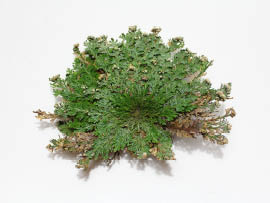- A-
- A+
What is trehalose?
 Trehalose is a natural sugar, found in certain animals and plants. It is used in several sectors, particularly in ophthalmology, due to its multiple health benefiting properties. The trehalose molecule, known for its protective, lubricating and hydrating properties, is a natural sugar with membrane stabilising and protective properties, preventing protein denaturation and lipid degradation. In this article, find out all there is to know about trehalose, its definition, properties and uses.
Trehalose is a natural sugar, found in certain animals and plants. It is used in several sectors, particularly in ophthalmology, due to its multiple health benefiting properties. The trehalose molecule, known for its protective, lubricating and hydrating properties, is a natural sugar with membrane stabilising and protective properties, preventing protein denaturation and lipid degradation. In this article, find out all there is to know about trehalose, its definition, properties and uses.
Trehalose is a natural sugar present in many living organisms such as plants, fungi, bacteria and invertebrates. It is formed from two glucose molecules bonded together. In scientific terminology this is referred to as a disaccharide.
It is produced by certain organisms to combate stressful situations or extreme conditions such as heat, cold, oxidation or dehydration. It preserves the cellular integrity of organisms. Due to its exceptional properties, trehalose has a lot of offer in terms of health benefits.
A natural example of Trehalose: the rose of Jericho

The Rose of Jericho, also known as “resurrection plant”, is a reviving plant and a perfect example of the beneficial properties of trehalose. The presence of trehalose confers this plant the capacity to endure long periods of desiccation, that may last for several years, and from which it can revive very quickly. It can survive almost total desiccation without any damage, as the trehalose temporarily suspends all the vital activities of the plant. Trehalose is a very valuable natural bio-protector, that can sustain life in certain organisms.
What are the properties of trehalose?
The properties of trehalose are multiple. It affects organisms in different ways:
- It acts as a regulator controlling the osmotic pressure, regulating the salt concentration in biological fluids (blood, urine, etc.)
- It is also known to be a stabiliser of proteins, preventing their denaturation and aggregation caused by situations of stress in extreme conditions
- Trehalose maintains the balance of certain cellular membrane components referred to as phospholipids
- It is produced during a process known as anhydrobiosis, where a dormant state is induced enabling survival during extreme dehydration. This defence mechanism has been observed in certain living organisms, such as the Rose of Jericho (see above) or cactus plants
- Trehalose also possesses certain antioxidant properties
- This is the reason why it is exploited in many different sectors including the pharmaceutical industry, the food industry and the cosmetics industry
The Rose of Jericho, which revives itself thanks to trehalose, is not the only organism to benefit from its astonishing powers. Tardigrades (also known as water bears) also survive in extreme conditions, thanks to trehalose, which replaces the water in their cells.
The uses of trehalose in ophtalmology
As a result of all these beneficial properties, the use of trehalose in ophthalmology has been widely studied, making it a molecule of significance in this sector. It is, for example, used in tear substitutes. Indeed, if water retention is associated with sugars in plant metabolism, sugars are also fundamental in the physiology of the ocular surface(1).
Ophthalmic properties of trehalose
Trehalose is known for its lubricating, hydrating and protective properties.
It has a protective and stabilising action on cell membranes, preventing the denaturation of the proteins and the degradation of lipids. It is also known for its healing qualities and its antioxidant action.
In vitro studies have proved that cells from the cornea (outer envelope of the eye), placed in a highly concentrated environment (hyperosmotic), were more resistant when processed by a trehalose solution(2).
Other in vivo studies carried out on animals presenting dry eye symptoms showed that the instillation of ophthalmic products containing trehalose were able to restore the integrity of the ocular surface, as well as decrease inflammation. Trehalose also reduces the production of free radicals (molecules that are harmful to health)(3)(4)(5). As a result, trehalose protects the cornea.
The history of trehalose
Ophthalmic products containing trehalose first started to be used in the early 2000s. Matsuo et al. first showed that trehalose solutions achieved better results than physiological serum for treating patients with moderate to severe dry eye syndrome.
In cases of dry eye syndrome, trehalose maintains a normal tear film in terms of quality and quantity.
How to treat dry eye syndrome?
Théaloz Duo ® is an ophthalmic trehalose eye drop treatment used for cases of moderate to severe dry eye syndrome. Théa associates trehalose with hyaluronic acid (polysaccharides naturally present in the eye), thus combining the effects of hydration and lubrication. It contains no preservatives and can be used by contact lens wearers. The dose is one drop in each eye, four to six times a day.
Sources :
(1) Action mechanism Théalose brochure
(2) Matsuo T. Trehalose protects corneal epithelial cells from death by drying. The British Journal of Ophthalmology 2001; 5: 610-2.
(3) Cejkova J, Ardan T, Cejka C, et al. Favorable effects of trehalose on the development of UVB-mediated antioxidant/pro-oxidant imbalance in the corneal epithelium, proinflammatory cytokine and matrix metalloproteinase induction, and heat shock protein 70 expression. Graefes Arch Clinical Exp Ophthalmol 2011; 8: 1185-94.
(4) Li J, Roubeix C, Wang Y, et al. Therapeutic efficacy of trehalose eye drops for treatment of murine dry eye induced by an intelligently controlled environmental system. Molecular Vision 2012; 18: 317-29.
(5) Cejkova J, Cejka C, Luyckx J. Trehalose treatment accelerates the healing of UVB-irradiated corneas. Comparative immunohistochemical studies on corneal cryostat sections and corneal impression cytology. Histology and Histopathology 2012; 8: 1029-40.



